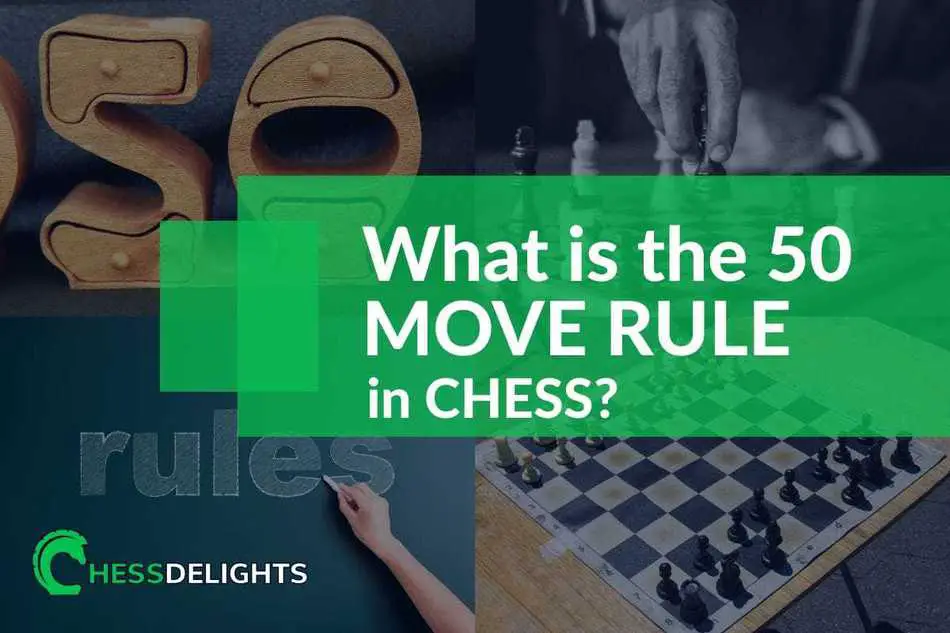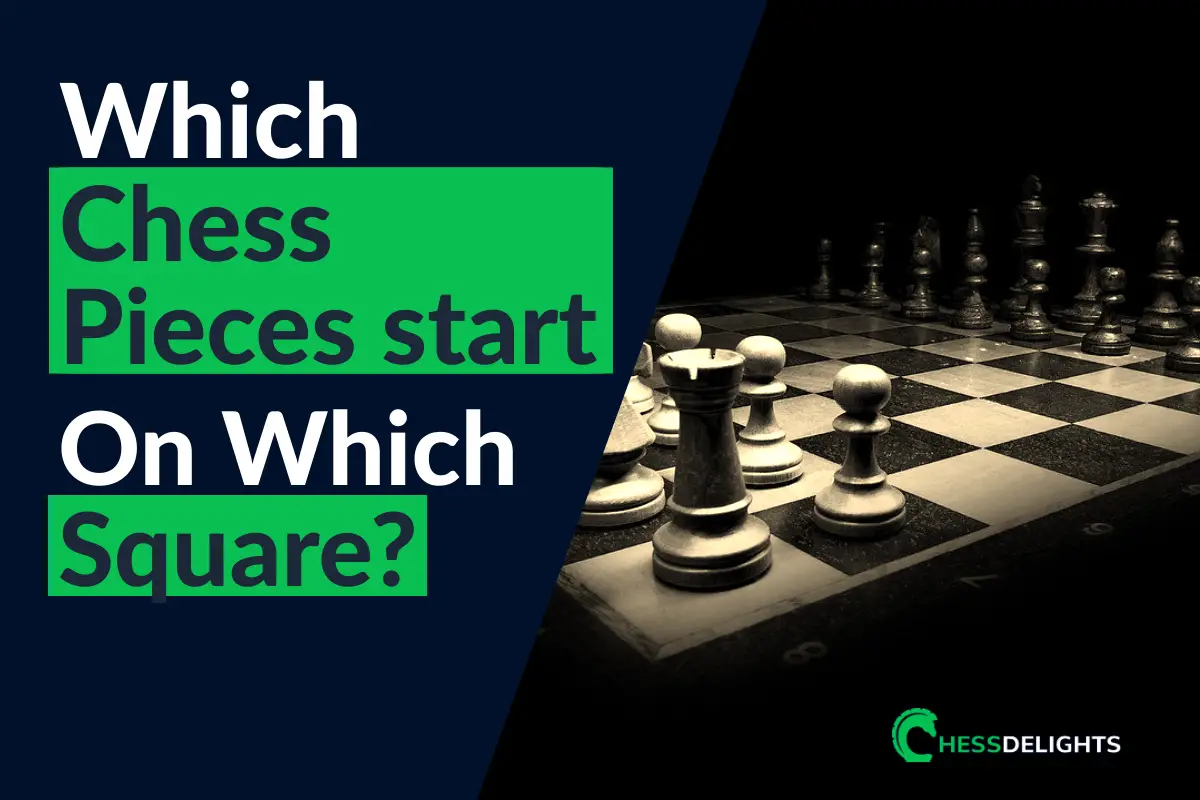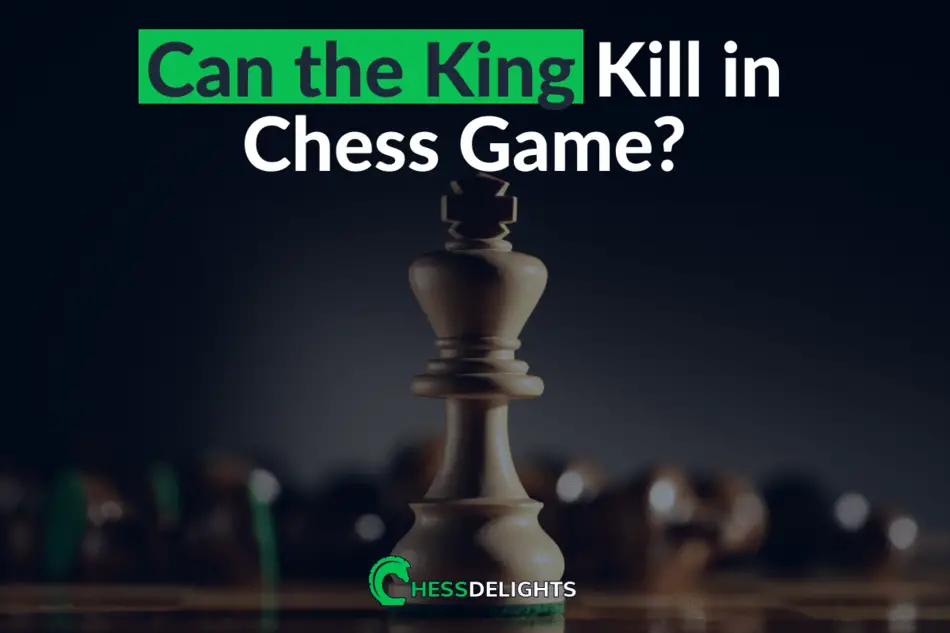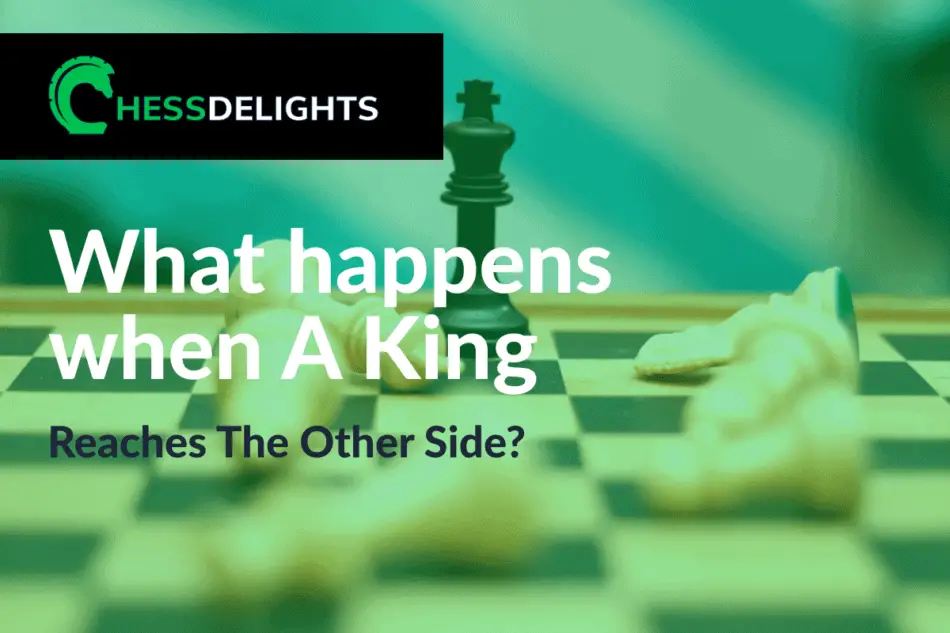The 50 move rule? Are you familiar with that chess rule in end games?
The end game for me is crucial and when I enter tournaments before I practiced with King plus pawn vs. King almost every day.
That's all I wanted to know…lol! I don't have books or even know about Google before… 🙂
But…
I advise you to have a strong background with end game strategy.
If your opponent is down with just a King and has an excellent end game strategy – your opponent can force a stalemate or even use the 50 move rule to force a draw. Are you familiar with that rule?
Learn the 50 move rule
The words 50 move rule is not my favorite chess rule especially for an advantage chess player trying to checkmate the King within 50 moves.
The 50 move rule applies during any stage of the game, and the only piece you are moving or is left legally to move is the King. This rule was implemented to avoid chess players trying to prolong the game and trying to make opponents get tired of playing.
Now, the game is considered a draw if a player claims a draw- not only after reaching the 50th move (the count starts as both players completing each other's turn). But even beyond the 50 moves without any chess pieces being captured or without any pawn moves on either side.
Since I'm not a master or an expert chess player… Do you know what I feel when I have the advantage? I feel a bit in a hurry to end the game within 50 moves; sometimes it causes me to commit mistakes or blunders. 🙁 So, you have to reset…
Also read: What is the difference between stalemate and draw?
How to reset the 50 move rule?
Now that you are familiar with the 50 move rule… And you are aware that your opponent only has 50 moves to claim a draw.
How do you reset the count? The obvious answer is to stop the King from moving instead make your opponent move a pawn (usually this situation happens during the end game) or capture a chess piece. Yes, you can reset the count by capturing your opponent's chess pieces.
True, it's easier said than done… but with the awareness that you have right now, you can avoid a draw and get into a 50 move rule with your opponent. It's only 50 moves, sounds easy huh?! 🙂 But why 50?
Why the number 50 was chosen for the fifty-move rule?
50 sounds practical don't you think? Lol! I was curious about this rule… I know you are too! So, I started going into forums and learned about some interesting idea about why the number 50.
The rule went over 100 moves once upon a time but reverted to 50 move rule. A chess player can keep on avoiding or in some cases keeps on trying to checkmate with no chance at winning at all. It was theorized that a chess player could typically win a chess game using basic checkmate strategies within 50 moves.
This type of rule is very much necessary to have a decisive chess game. And it has been decided – 50 is a good number! 🙂
Other number move rules you might have heard besides 50 move rule
To complete this article, you might have heard or seen the other 50 move rules circulating the web… Are they part of an official chess rule or even considered as a real rule of chess? Let's just stop it right here and find out what's true and what's not.
Here are the two rules you might have encountered:
16 move rule in chess Experts say that 16 move rule does not exist in chess games.I've searched and searched regarding this 16 move rule, but it doesn't merely exist.
Next… 75 move rule in chess Ok, there is a 75 move rule, and this time a draw will be considered by an arbiter.
If all considerations above like no pawn move and no capture were met, and within 50 moves the players kept on playing.
It's only when the 75 moves that an arbiter may interfere and declare the game a draw.
The question next is why didn't they just draw on the 50th move? As I've said earlier – the option to claim a draw is available for the players within 50 moves (a draw can be claimed by a players turn to move), but that doesn't mean you can't continue up to the 75th move…
Again, you can claim a draw if you want as long as it is legal to do so…no pawn moves and no capture pieces in the last fifty moves. If you keep on playing beyond those number of 50-75, then someone like the arbiter can decide that your game is a draw.
Today, it's the 50 move rule that is well known for a draw, but it's not the only draw that we can claim during any game of chess…
You might also be interested in learning more about “en passant rules“.
Threefold repetition draw
Now… Since we are talking about a draw. You can also claim a draw with threefold repetition too…this is a valid strategy to claim a draw, but I don't like to end a game like this.
It's a move that when the same position repeats three times and it does not even need to repeat successively, but it only repeats three times in the same position with the same player. Then a player can call an arbiter and claim a draw if this happens during the game.
This can happen at any stage of the game.
It can be missed by both players, and it's also a way for a losing player to escape with a draw.
One typical scenario that this can happen is during King's check or most commonly called a perpetual check. I've encountered this a few times where my opponent just keeps on placing my King under check three times, and we were just moving in the same position over and over again.
You may also be interested in reading “can you capture the King in chess“
Other examples of draw
You might ask about a bunch of other draws in chess. So, I've added two more scenarios…
1. If both players do the shake hand. It's an agreement that the players have decided that the game is a tie and therefore both comes to an agreement that it is and do the shake hand.
2. If both players only have their Kings left. This is another one that's obvious and may not happen or even reach this point because chess players can assess this a few moves ahead and declare a draw.
You'll quite see the shake and most of the time a draw happens. It's a gentleman gesture, and it just keeps the game more interesting because we never really know what would happen if the game continues – it would not be the same with the number 2 though. 🙂 Fun related questions are coming up…
Can checkmate override the 50 move rule?
What if on the 50th move you checkmate your opponent or worse you got checkmate? Can you claim a draw? Is it a draw?
I bet you know the answer – the rule is you can claim a draw if it is your turn, but you can also not claim a draw on the 50th move…what I'm trying to say is that checkmate overrides the 50 move rule since draw can no longer be claimed obviously because of the checkmate.
There's been a back and forth friendly discussions about this, but finally, it has been decided that checkmate is to be followed in this type of scenario.
Also read more about “stalemate and draw” in this article.
Can castling reset the 50 move rule?
This is a bit unusual. Can this happen, I'm not quite sure… Before the 50 move rule can even begin, the game I guess comes up during the end game.
And castling I would say is part of a King's move wherein no pawn move progressed happens and not even a captured piece can occur. I would not consider this as a way to reset a 50 move rule back to zero.
What do you think about this?
Check out chess recommendations here.
Wrapping Up
You should keep in mind that in every place you come and enter a tournament there are different rules that they follow.
Make sure that you somehow have an idea about the rules from the very start in every tournament you enter or even if it's just a friendly game with friends- it's always nice to know what rules you should follow and try to avoid it as much as you can.
For the 50 move rule… Getting skillful with the end game will help you deal with the 50 move rule in a more strategic way. This rule is a game changer even though I'm not excited about it.
The 50 move rule will prevent players from wasting each others time; it also prevents the game from being endless. That'd be crazy if you just keep on playing the whole day on only one game!
The best way to prove that 50 move rule was reached is by writing down all the moves that have taken place during the game, or if you're just like me, I only count not too loud but enough to let my opponent hear it.
Have fun teaching your kids about the 50 move rule! I hope this was helpful! Thank you for reading







